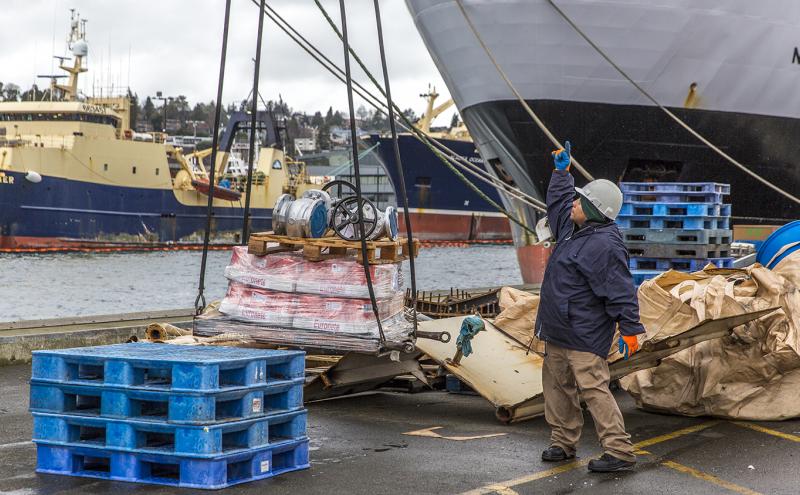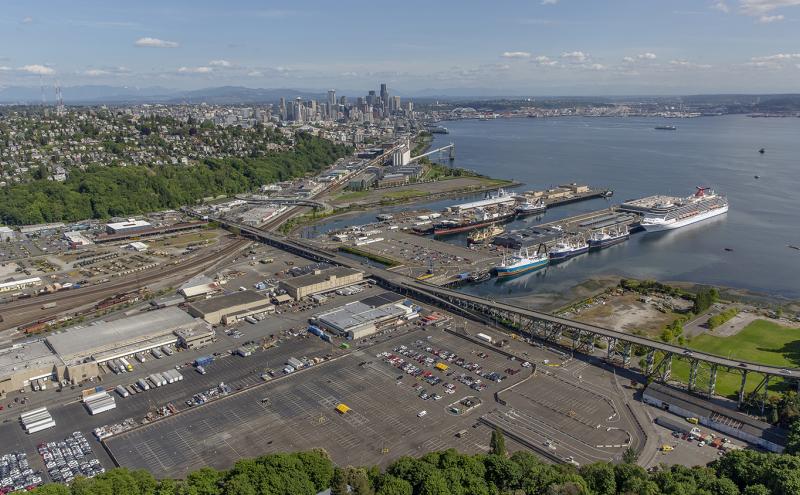
Most tenants on Port of Seattle maritime properties are responsible for maintaining stormwater structures within their leasehold. These structures include ditches, gutters, storm drains, catch basins, manholes, floor drains, and sanitary sewer connections. Port staff can assist tenants with maintenance or repairs to these structures. If you have operation and maintenance questions, or need to report an issue, please contact your property manager. For questions about the Port’s stormwater program or educational materials, please email the Maritime Stormwater Team at: Stormwater-Maritime@portseattle.org
Source Control and Stormwater Pollution Prevention Plans (SWPPPs)
Tenants who hold a National Pollutant Discharge Elimination System (NPDES) permit are required to have a Stormwater Pollution Prevention Plan (SWPPP) as part of their permit requirements. These NPDES permits include Industrial, Boatyard, Construction, and Individual.
For most other tenants, they are included under the Port's Phase I Municipal Permit. The Port provides a template so tenants can easily create their SWPPP, including a quick reference of Best Management Practices (BMPs) required of ALL businesses in the City of Seattle, and a number of summary BMP sheets relevant to operations found around the Port.
Here are helpful resources for tenants:
- General Tenant SWPPP Template
- Parking, Parks, Office, Storage, and Moorage SWPPP
- City of Seattle Stormwater Code
- Portable Container Storage BMP Summary Sheet
- Waterfront Loading/Unloading BMP Summary Sheet
- Metalworking BMP Summary Sheet
Tenant Responsibility for Spills and Illicit Discharge Detection and Elimination (IDDE)
The Port's Illicit Detection and Discharge Elimination (IDDE) program, another requirement of the NPDES permit, concentrates on the prevention, detection and removal of illicit connections and discharges, including spills, to the Port-maintained stormwater system. The goal is to prevent everything except rainwater from entering the stormwater system and draining to rivers, bays, and Puget Sound. Tenants are responsible for eliminating non-stormwater discharges or connections to the stormwater system and should not dump or discharge any substance into it. IDDE program brochures help guide tenants and are translated into multiple languages.
The IDDE program contains several components:
- Policy prohibiting illicit discharges
- Enforcement plan with mechanisms for ensuring compliance
- GIS map of all outfall locations, land use, stormwater lines and structures
- Operation and maintenance program for stormwater facilities
- Field inspections of outfalls and stormwater structures to identify and remove illicit discharges
- Spill response plan with a qualified spill responder
In the event of an spill or discharge, follow the Environmental Incident Notification Guidelines.
Construction Projects
New development and re-development projects on Port property must adhere to strict standards to protect water quality. When tenants perform construction on Port property, they are required to notify their property manager. Tenants must also acquire any necessary state or local permits and meet all requirements for projects under their control.
For construction projects that disturb more than one acre, tenants must apply for a state Construction Stormwater General Permit and develop an appropriate erosion and sediment control plan to protect downstream water quality. If the City of Seattle threshold of 750 square feet of land disturbing activity is triggered, tenants should review and abide by requirements outlined in the Seattle stormwater codes. There may be other city and state regulations that apply, and it is the tenant’s responsibility to understand and meet these regulations.
Tenants are encouraged to consider low impact development (LID) or sustainable ‘green’ stormwater methods when designing new projects. LID and green stormwater infrastructure, such as permeable paving, vegetated roofs, and rainwater collection, are management strategies that emphasize conservation and natural site features that more closely mimic natural rainwater runoff. Tenants should work closely with Maritime Stormwater Team, and their design engineer to determine if these alternatives are feasible on their site.
Please contact your property manager or refer to your lease and preferential use language for additional information.


